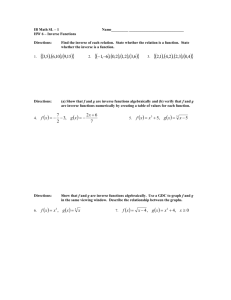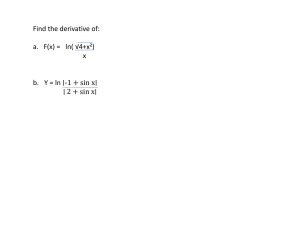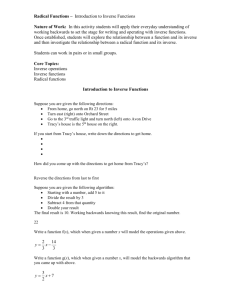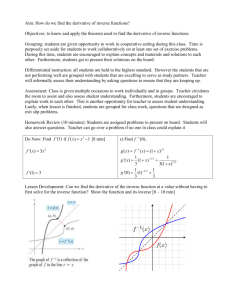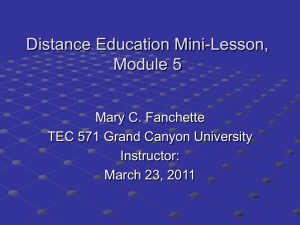Übungen Ergänzungen Angewandte Geophysik
advertisement
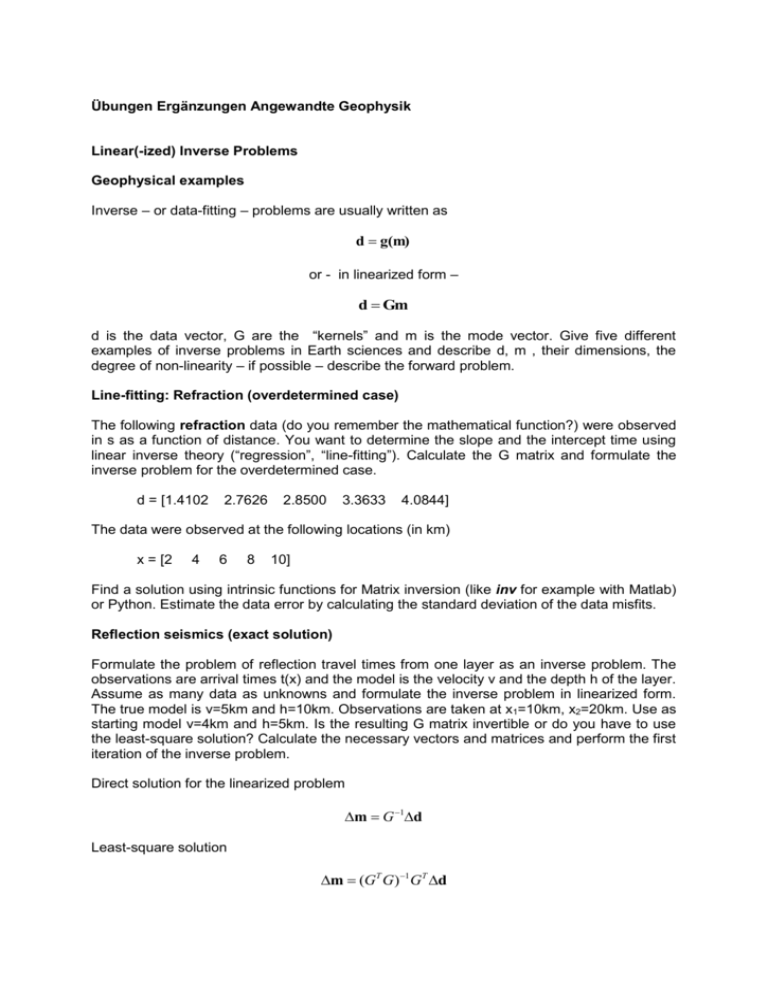
Übungen Ergänzungen Angewandte Geophysik Linear(-ized) Inverse Problems Geophysical examples Inverse – or data-fitting – problems are usually written as d g(m) or - in linearized form – d Gm d is the data vector, G are the “kernels” and m is the mode vector. Give five different examples of inverse problems in Earth sciences and describe d, m , their dimensions, the degree of non-linearity – if possible – describe the forward problem. Line-fitting: Refraction (overdetermined case) The following refraction data (do you remember the mathematical function?) were observed in s as a function of distance. You want to determine the slope and the intercept time using linear inverse theory (“regression”, “line-fitting”). Calculate the G matrix and formulate the inverse problem for the overdetermined case. d = [1.4102 2.7626 2.8500 3.3633 4.0844] The data were observed at the following locations (in km) x = [2 4 6 8 10] Find a solution using intrinsic functions for Matrix inversion (like inv for example with Matlab) or Python. Estimate the data error by calculating the standard deviation of the data misfits. Reflection seismics (exact solution) Formulate the problem of reflection travel times from one layer as an inverse problem. The observations are arrival times t(x) and the model is the velocity v and the depth h of the layer. Assume as many data as unknowns and formulate the inverse problem in linearized form. The true model is v=5km and h=10km. Observations are taken at x1=10km, x2=20km. Use as starting model v=4km and h=5km. Is the resulting G matrix invertible or do you have to use the least-square solution? Calculate the necessary vectors and matrices and perform the first iteration of the inverse problem. Direct solution for the linearized problem m G 1d Least-square solution m (GT G)1 GT d Seismic tomography (overdetermined case) Formulate the problem of the simple tomographic experiment to recover velocity perturbations from travel time perturbations. Calculate matrix G for the geometry given in the graph. Assume a side length l of the blocks. Check (e.g., using Matlab) whether the system can be inverted using the least-squares Ansatz. What is different in this toy example compared to a realistic tomographic experiment?




